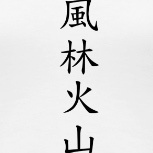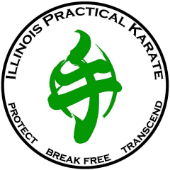All Activity
- Yesterday
-
Another place to closely watch your surroundings is gas stations. If you are filling up the car, be sure to know who is near you, as gas stations are a common place of scammers and hustlers to confront you and try to ask for money. Often times they will approach you in large vehicle, kind of trying to box you in while you're filling up and will have multiple people with them. Try to fill up before you get down to empty so you have options, don't let yourself be stuck having to fill up at the next gas station just in case it is sketchy. As a rule, I fill up when I get to 1/4 of a tank, sometimes I do it at 1/2 a tank. Like a supermarket, everyone goes to a gas station which means it can lead to encounters with gang members, hustlers, crazies, and weirdos. We actually had a karate student who told a story about getting into a fight outside a gas station. Something to think about.
-
Todd Bowles was able to keep his job with the Bucs, but he is shaking up the coaching staff, replacing multiple people including the OC. Tampa finished 21st in total offense. This will be the 9th different OC Bakery Mayfield will have played under in his career.
- Last week
-
The Bujinkan increased the number of yudansha grades from 10 to 15, I think sometime in the 80s, so 12th Dan is a real rank in that organization, even though basically every other traditional art and organization only uses 10 yudansha grades. As for the system, itself, it is largely cosplay. They present ninjutsu as if it is a specific martial art, but it isn't a martial art, at all. Ninjutsu is, essentially, spycraft--camouflage, disguise, poisons, assassination methods, etc. Real ninja/shinobi were just samurai who also learned spycraft, so the martial arts aspect of ninja/shinobi is literally just Japanese jujutsu, and every clan had their own system of jujutsu, some of which are still around, today. A lot of the material in the Bujinkan is pretty typical of most jujutsu styles, but a lot of it is definitely material that hasn't been pressure tested, and can get pretty esoteric. Masaaki Hatsumi supposedly learned several jujutsu systems and blended them together to create the Bujinkan's martial arts material, and I honestly don't know where he got the spycraft aspects, which they don't seem to actually do much of, but I suspect it is almost entirely taken from theater and film. The fact that they dress in stereotypical ninja garb reinforces that theory, because real ninja/shinobi did not dress that way, they dressed to blend in with the people they were going to be around while they were spying. The outfits they are wearing in the Bujinkan are Noh theater stagehand costumes, designed to make the stagehands disappear against a black backdrop. This became associated with ninja/shinobi because the way that Noh theater presented mysterious assassinations was by having a stagehand use a weapon to kill a character, so you were supposed to be seeing a weapon floating in the dark, and have no idea who was wielding it. That made people essentially assume that assassins would wear the same outfit so they could hide in the dark.
-
Once again…NFL HC jobs are like a tight rope walker’s career…NFL/Not For Long.
-
Black Monday bleeds into Tuesday as the Ravens have fired head coach John Harbaugh after 18 seasons. That missed FG at the end of the game on Sunday cost him his job, and might have saved Mike Tomlin's, as there were chants of "fire Tomlin" from Steelers fans several weeks ago. While I did not expect this at the same time it is not surprising. The Ravens have not been able to get over the hump for a while, continuing to come up short in the biggest games against the best teams. Two Sunday night losses in the last three weeks, one to the Steelers and one to the Patriots, sunk Harbaugh's future with the Ravens. Now seven teams are looking to hire a head coach for next season: Giants, Titans, Raiders, Browns, Cardinals, Falcons, and Ravens. Mike McDaniel will be coming back for the Dolphins, but the team is looking for a new GM since Chris Grier was fired back in October. Miami was 2-7 but finished strong, securing McDaniel another chance next season. The Falcons are another team looking for a GM. Lions have fired OC John Morton, and Cowboys have fired DC Matt Eberflus. The Jes, Giants, and Commanders have all fired their DC as well.
-
If someone wants satiate the dreams of their inner eight year old, I could see the appeal. But ninjas haven't been cool since waning of the popularity of the original Teenage Mutant Ninja Turtles cartoon. So I can't imagine that there'd be many people in ninjutsu/bujinkan schools under the age of 40.
-

DarthPenguins Training log of an unfit person!
DarthPenguin replied to DarthPenguin's topic in Health and Fitness
Have once again been horrendously remiss in updating this! Kept training through most of December and even added in some regular runs (which i hate!) Won't bother with updates for missing period and will start with this week! Monday 5th January Lifting Session Back squat 20kg x 5 40kg x 3 60kg x 2 83kg x 5 83kg x 5 83kg x 5 83kg x 5 Had tested indicative max at end of January. did a few reps with 110kg and it flew up out of the hole but slowed down a lot at a sticking point nearer the top. From looking into it this is likely weak glutes / hamstrings so i will try to work on that too which should also help my kick height. Bench press 20kg x 5 40kg x 3 60kg x 2 68kg x 5 68kg x 5 68kg x 5 68kg x 5 Again i tested this end jan. Can just get 100kg for 1 rep and it is proper maximum but i also have a very marked sticking point near the top of the lift so need to strengthen triceps. Romanian Deadlift 60kg x 5 60kg x 5 60kg x 5 60kg x 5 Starting these pretty light but will be double overhand with no straps to also work on grip. This should help work on hamstrings / glutes Assisted pull up with 25kg band 5 reps 5 reps 5 reps pleased with these - have already really reduced the amount of band assistance from when i first started on them will build to 3 x 10 then reduce banding until i get to bw Standing military press 30kg x 10 30kg x 10 30kg x 10 Again went light for these. Partly to work on SE as the weight flies up for first 6 reps or so then my shoulder start to fatigue a bit so i need to work on that and increase their work capacity which should carry over well to my martial arts training Close grip bench press 50kg x 10 50kg x 10 50kg x 10 adding these in to work on triceps strength E-Z bar biceps curl 26kg x 8 26kg x 8 26kg x 8 Overall good first lifting session of 2026, i was pleased! -

What was the point of it all? Losing my mind
DarthPenguin replied to Revario's topic in Health and Fitness
Thanks for taking the time to pull together the detailed write up! As others have said the issues / questions you have raised are not new ones and are ones that many people have and reach their own conclusion on. I would be surprised if your current instructor hasn't had similar thoughts at some point in his personal journey and come up with his own answer to them - have you tried discussing it with him? It could be an issue for you of "you don't know what you don't know". Giving some personal examples: i was away from karate for an extremely long time, and only actually returned as my son wanted to train in it. So i went back, returned myself to white belt and started training. One thing i noticed straight away is that while i was away i had fallen into the camp of "they have lots of useless silly stances", when i came back i came to the realisation that the stances (in my view) are more of a type of body conditioning / stretching and a way of honing your body. When we do kumite we immediately shorten stances and go back to a more "kickboxing style" stance. My other experiences had then led me to a greater appreciation of what i am being taught. I have also over the years come across many people who have the idea that they are going to ignore conventional training because they want to focus on "self defence and what actually works in a fight". Usually when i look into it more or try to spar with them etc. they couldn't fight their way out a wet paper bag. They will focus on lots of silly partner drills with a compliant partner and believe that if someone comes at them then they will miraculously be able to protect themselves from the knife etc.. There are obviously exceptions to this rule. I had a former instructor who used to like teaching knife defenses by covering a plastic blade in some paint and that showed you the cuts or stab wounds you would have received which was very eye opening - he used to be ultra practical and tell you that in reality you will be cut/stabbed in that situation so don't get into it or worst case pick where you will be cut! It sounds like you had a decent Krav Maga school (which will have been good) but i must admit i am always a bit sceptical of them as from prior experience the style often seemed to boil down to "kick them in the balls", which while effective is hard to drill and practice! If you are wanting to boil everything down to self defence then fair enough but i would build a decision tree with some questions and take it from there. I would start with: do you want to protect yourself in a way that minimises the risk of your going to jail? If no, then tbh get some weapons and build skill in using them and improvised ones; if yes then next step is what type of situation do you think you would be in? Someone aggressive starting a fight in a bar / location or are you in a more dangerous area where you might be attacked by someone with a weapon? etc. etc. For me, when i asked those questions and follow ups (plus making allowances for age etc as i am 46) i came to a set of conclusions and i train Shotokan, Judo and BJJ together now. I also try to see where i can blend the styles together eg if someone closes range in karate kumite maybe i could use one of a few judo throws there and the one i use might be picked as it segues into a bjj technique i like etc. In my view, when it comes to self defence you need to focus on gross repeatable motor patterns since those are more likely to be repeatable under high stress situations. You also need to pick things that work for you and suit your body type e.g. i am 6'4 and about 230lb (in US units) so i will be suited to different techniques to someone who is 5'10 and 160lb. If i was to pick (from scratch) what i would want to learn to defend myself in my early 20s i would pick up 3 styles (one for stand up striking, one to deal with clinch range and one for on the ground) and would choose Muay Thai (you learn to judge distance, take a hit, deliver a hit and amazing conditioning), Judo (better judo schools in the UK than wrestling plus in public people wear clothes but if in the USA might opt for wrestling) and for the ground work BJJ. Learn all 3 to a black belt (or equivalent) level and you should be able to protect yourself in most situations, having applied your techniques on resisting similarly sized or bigger opponents. IF worried about weapons then add in some Kobudo. If you want to start (in essence) teaching your own style then, being blunt, you need to acquire rank in the component styles you are using as a building block. Not because rank in itself confers any validity but it does confirm that a skilled practitioner of that style has independently determined your skill level in that style to be X level. If i looked into a non mainstream style and was told it was self defence focused and made up by the instructor i would heavily scrutinise the instructors credentials: i would expect multiple dan ranks in traditional styles; a amateur/pro fighting record that can be verified; a law enforcement/ military background that i think would have conferred the skills. Eg if i saw one from an individual who said they were a Kru rank in Muay Thai, 3rd Dan Judo, BJJ Black Belt then i would take them seriously (or something like professional bodyguard in dangerous location X for high profile individuals - with evidence). If i saw "have trained in martial arts since i was little, lots of breaks, not achieved Dan rank in any but i have done lots of research etc." then i wouldn't even bother looking into it further as i would want some independent validation of skills. Likely a little harsh of me i know but just being honest! -
Well…YEAH!! Why not!! My bubble just got burst!! The NFL will not allow Brady to return to the gridiron for one simple reason: his role as a minority owner of the Raiders. NFL created a rule back in 2023 that prohibits non-family employees of an owner from holding equity in a team. Brady of he QB’d for the Raiders would be an employee; a conflict of interest. Well…darn it.
-
Are you calling for Tom Brady to pull a Phillip Rivers??
-
Reviving an old thread, a new school opened in my neighborhood, offering "Bujinkan Budō Taijutsu". The instructor claims to be 12th dan and training since 1986. I stopped by an open house briefly, he seems to be mid-40s, friendly and sincere. Looked like they did a lot of sword work (but no kendo gear). Nicely appointed room & mats inside an athletic center. Looking up this Style, it gets complicated with lots of different ninja stuff, lineages & such. Seems fishy to me, the idea of a 12th dan seems like a bad Internet faker joke. No plans to train there, just curious who's doing what in my area.
-

The Martial Artists' Training Log
bushido_man96 replied to bushido_man96's topic in Health and Fitness
12/30/2025 Pre-class, I did some speed bag work and some crescent kick stretching over a kid Wavemaster. Taekwondo: 5:45 - 6:30 pm. Traditional Class. I ended up teaching this class (first class back after rotating shifts). I did do some basics along with the class and got a little bit of work in. It was a nice dive back into things. Went through white, low orange, and low green belt forms. With one of the low orange belts I emphasized for them to try to "see everything, but don't look at anything." Concentrate on awareness and focus during forms work. One-steps were done for the same. The other two school owners were present so they jumped into class and were partners with the students, so I focused on the low orange belts working on their one-steps. Sparring: Several rounds of free-sparring and combinations (for the white belt). Then went into blocking drills: 1. Lined everyone up into one line down the room, facing the mirrors. Sparring stance and moving, I came by with a blocker and swung to force them to block on the side the attack came from. Again during sparring I saw too much "fencing" trying to parry everything with the lead hand. This forced them to block with the rear hand on that side. I had them add a counter after the block. 2. I put everyone facing a partner in a sitting stance and had them do blocking contact drills that are basically conditioning drills on the forearms. The main thing I was looking for was good arcs of travel for the blocks contacting each other. I did this with inside blocks and then with low blocks. Then I briefly showed them a "six-star hit" where you contact low with the top of the forearms, then the same arm circles up and contacts with the inner forearms, then the same arm circles back to a low block contacting with the outer forearm. The students kept their forearm pads on so it wasn't a taxing conditioning drill, but more of a timing and rhythm drill, and getting the arms traveling in the proper arcs. -
I imagine there are rules against that. Buying an interest in a team so one can play for it is an interesting way of circumventing the free-agent system, and probably the salary cap, which would be frowned upon I think.
-

The Martial Artists' Training Log
bushido_man96 replied to bushido_man96's topic in Health and Fitness
12/26/2025 Speed Bag: 1:00/30 sec. 4 rounds. Spot Kendall. 4 rounds. The bag that was hung was a smaller bag than the one we usually had, and it moved much faster and I was able to get a much better rhythm going. -
bushido_man96 started following Resolutions and The legal aspect(references)
-

The legal aspect(references)
bushido_man96 replied to Spartacus Maximus's topic in General Martial Arts Discussion
Kane and Wilder wrote The Little Black Book of Violence, and although it doesn't necessarily have legal advise in it, it does a good job of laying out the consequences of getting into altercations, what to expect from law enforcement, etc. However, I would tend to agree with @Montana's advise to seek out the government websites. Reading statutes is helpful in understanding what law enforcement is looking for when they investigate various violent person crimes. Speaking with local law enforcement officers is a good idea, too, especially DT instructors or use-of-force specialists. -
Although I'm not looking to set concrete goals like above, my hope is to put more time into Aikido and BJJ. This will get easier when wrestling season is done. I do hope to test again in Aikido this year.
-
It’s all good my friend!!
-
I know it’s not of any consequence nor a possibility but why don’t the Raiders entertain, even if just for a second, ask Tom Brady to return to the NFL gridiron to QB for 1 season for the Silver and Black?!? After all, Tom has an interest to see the Raiders get out of the gutter. Unless there’s some NFL rulings that would prohibit that.
-

The Martial Artists' Training Log
bushido_man96 replied to bushido_man96's topic in Health and Fitness
12/19/2025 Heavy Bag Workout: 1:00/30 sec. 4 rounds, orthodox/southpaw alternating. Went to spot Kendall in the gym. 4 rounds, orthodox/southpaw alternating. Went to spot Kendall in the gym. 4 rounds, orthodox/southpaw alternating. -
NFL Black Monday is in full swing. As @sensei8 posted the Raiders have fired Pete Carroll after a disaster of a season. Also, the Falcons, Cardinals, and Browns fired their head coach. The Bengals have said they are bringing back Zack Taylor for next year, who will be on the hot seat. No word yet on if Tampa is going to keep Todd Bowles for another season or move on. The Bucs imploded in the second half of the season losing seven of their final nine games and missing the playoffs. The coach's abrasive press conference after the Thursday night meltdown loss to the Falcons failed the inspire the team much.
-
Sorry.
-
At my age, my only resolution is to awake each morning to a new day.
-
Cowboys lost to the Giants 34-17. Raiders ALMOST loss against the Chiefs. With only just over 1 minute remaining in the game the Chiefs went ahead 12-11. I was sure that the Raiders were done for once again. That was until the Raiders kicked a 60 yard field goal for the win. Raiders owner Mark Davis has fired head coach Pete Carroll… “The Las Vegas Raiders have relieved Pete Carroll of his duties as head coach. We appreciate and wish him and his family all the best. Moving forward, General Manager John Spytek will lead all football operations in close collaboration with Tom Brady, including the search for the club's next head coach. Together, they will guide football decisions with a shared focus on leadership, culture, and alignment with the organization's long-term vision and goals”. ~ Mark Davis This wasn’t surprising whatsoever. Once again the NFL means, in Pete Carroll’s case, Not For Long. As usual at seasons end, head coaches are fired for cause. Hopefully, for my wife’s sake, the Raiders don’t waste their #1 pick and actually draft some solid players in key positions, namely QB and Offensive Linemen. As far as my Cowboys…well…too bad that Jerry Jones can’t be fired as GM. Isn’t football fun?!?
-
Very fair point - while i loathe him he deserves respect for getting in there by a live puncher in Joshua. I genuinely don't think Joshua went at him full bore (i still believe he might have killed him if he did) but taking punches from a boxer like Joshua takes serious guts. He deserves a lot of praise for his bottle and courage if nothing else


.thumb.jpg.6ec1daf291cd6fd9ebc21f5205adf035.jpg)




